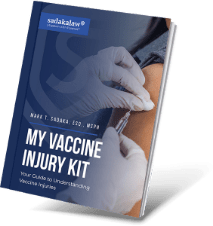“Gardasil is the only human papillomavirus (HPV) vaccine that helps protect against 4 types of HPV. In girls and young women ages 9 to 26, Gardasil helps protect against 2 types of HPV that cause about 75% of cervical cancer cases, and 2 more types that cause 90% of genital warts cases. In boys and young men ages 9 to 26, Gardasil helps protect against 90% of genital warts cases. Gardasil also helps protect girls and young women ages 9 to 26 against 70% of vaginal cancer cases and up to 50% of vulvar cancer cases. Gardasil may not fully protect everyone, nor will it protect against diseases caused by other HPV types or against diseases not caused by HPV. Gardasil does not prevent all types of cervical cancer, so it’s important for women to continue routine cervical cancer screenings. Gardasil does not treat cancer or genital warts. Gardasil is given as 3 injections over 6 months,” according to gardasil.com.
Sounds good, right? Well there are some risks that you need to be aware of before you allow yourself or your loved one to be vaccinated with Gardasil. And the Food and Drug Administration believes that it is important enough that they have recently made changes to the warning label.
On June 9, 2009 FDA approved a revised label for Gardasil. In the new label, information pertaining to syncope is now also included in the Warnings and Precautions section, and this section has new information noting that individuals who faint sometimes have tonic-clonic (jerking) movements and seizure-like activity. The addition of syncope to the Warnings and Precautions section emphasizes that healthcare providers and consumers should be alert that fainting may occur following vaccination with Gardasil, sometimes resulting in falling and injuries. To prevent falls and injuries all vaccine recipients should remain seated or lying down and be closely observed for 15 minutes following vaccinations.
The American Heart Association describes syncope as temporary loss of consciousness and posture, described as “fainting” or “passing out.” It’s usually related to temporary insufficient blood flow to the brain. It most often occurs when the blood pressure is too low (hypotension) and the heart doesn’t pump a normal supply of oxygen to the brain.
It may be caused by emotional stress, pain, pooling of blood in the legs due to sudden changes in body position, overheating, dehydration, heavy sweating or exhaustion. And it may be a side effect of some medicines.
The Health and Human Services website states, “Syncope has been in Gardasil’s labeling for both the healthcare provider and the patient since October 2007; however, FDA and the Centers for Disease Control and Prevention (CDC) continue to receive reports of traumatic injuries of individuals fainting and falling after receiving Gardasil. Some who fainted have had serious injuries from falling, which have often occurred while still in the healthcare provider’s office, and other fainting episodes resulted in motor vehicle accidents. Therefore, FDA requested the manufacturer, Merck and Co., Inc., to add this information to the Warnings and Precautions section of the label, so that it is more prominent, and reminds healthcare providers that recipients of Gardasil should be closely observed for 15 minutes after vaccination. Gardasil recipients should be alerted to the following warning signs and symptoms that may happen before a person faints: paleness, sweating, dizziness, ringing in ears or vision changes.”
Gardasil is a vaccination that may help protect against cervical cancers, and other diseases. However, there has been a change in the label due to recipients of Gardasil fainting, otherwise known as syncope; and it is important the physician’s administering this vaccination are aware of these new warnings.






